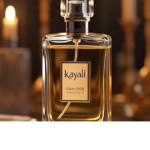Introduction
Lately, East Fashion has seen an interesting resurgence. While creators from nations like China, India, Japan, and the Center East have for quite some time been known for their choice craftsmanship, multifaceted plans, and extravagant materials, another flood of creatives is reshaping the story. The customary articles of clothing of the East are being imbued with current components, making design that is both established in history and new in its contemporary allure.
The Origins of Eastern Fashion
Traditional Eastern Garments and Their Cultural Significance
For a really long time, East Fashion has been characterized by pieces of clothing that are frequently made with meticulous scrupulousness. A large number of these pieces of clothing convey profound social importance and are utilized in strict, illustrious, and celebratory settings.
The Kimono: A Symbol of Japanese Tradition
The Kimono is maybe quite possibly of the most famous article of clothing in Eastern design. In Japan, this wonderfully created garment represents elegance, humility, and social pride. Its many-sided plans, made with lavish textures like silk, frequently convey meaning and are profoundly attached to the seasons or explicit services.
The Sari: India’s Timeless Elegance
The Sari is another notorious piece, addressing the assorted and dynamic culture of India. Worn customarily by ladies, this rich article of clothing comprises of a long piece of fabric folded over the body in different styles, frequently exhibiting elaborate weaving or print work. The sari is an ideal illustration of how style can convey social character while as yet considering individual innovativeness.
The Qipao: China’s Feminine Grace
The Qipao, or Cheongsam, is a figure-hugging dress that originated in China and gained global popularity during the 20th century. This garment is known for its clean lines, silk fabric, and exquisite embroidery. Often worn during formal occasions, the Qipao is a timeless symbol of Chinese elegance and femininity.
Modern Trends and How They Influence Eastern Fashion
The Rise of Fusion Fashion
Quite possibly of the most astonishing improvement in East Fashion is the ascent of combination styles, mixing conventional components with present day impacts. As worldwide style keep on developing, numerous Eastern fashioners have tracked down ways of integrating Western cuts, outlines, and textures into their assortments while holding customary examples and styles.
Eastern Fashion on the Global Runway
Style shows and assortments from Eastern originators are presently causing disturbances in global design capitals like Paris, New York, and Milan. Originators, for example, Indian’s Sabyasachi Mukherjee, Chinese brand Shanghai Tang, and Japanese creator Issey Miyake have carried customary Eastern feel to the very front of worldwide design.
Contemporary Fabrics and Designs
Current Eastern architects are progressively exploring different avenues regarding new textures and procedures that mix custom with development. For example, the utilization of computerized prints on customary materials or the combination of cutting edge materials with extremely old winding around strategies permits Eastern design to make a scaffold between the old and new.
Key Elements of East Fashion: Elegance Meets Chic
Fabrics, Textures, and Patterns that Define Eastern Style
Eastern design is famous for its rich materials, complex weaving, and perfectly hand-painted designs. These components are stylishly satisfying, yet additionally profoundly implanted in the locale’s social legacy.
Silk: The Ultimate Symbol of Elegance
Silk is inseparable from East Fashion, particularly in nations like China and India. Its smooth surface, sheen, and regular properties make it an ideal texture for very good quality articles of clothing. Silk is many times utilized in conventional pieces like the Chinese Qipao or the Indian Sari.
Embroidery and Handcrafted Details
One of the champion highlights of Eastern style is its fastidious scrupulousness. The craft of weaving, be it as botanical themes, mathematical examples, or emblematic symbolism, is vital to numerous Eastern articles of clothing. Architects keep on embracing these handmade subtleties while matching them with present day cuts and outlines.
Intricate Prints and Designs
Eastern design is likewise known for its staggering prints. From the fragile flower designs on a Japanese Kimono to the lively block prints found in Indian materials, these plans frequently recount a story or summon a feeling of spot. Today, these prints are being reevaluated in contemporary styles, interesting to a more extensive, more worldwide crowd.
The Influence of Technology on Eastern Fashion
Modern Fashion Meets Technology
Eastern design has tracked down an agreeable mix among custom and innovation. The utilization of advanced printing, 3D weaving, and even simulated intelligence produced designs has opened new entryways for development inside Eastern style.
Sustainable Practices in Eastern Fashion
As manageability turns out to be more significant in style around the world, Eastern architects are embracing eco-accommodating techniques. Brands are investigating the utilization of natural textures, eco-cognizant colors, and inventive creation strategies that safeguard the climate while keeping up with the style and extravagance of conventional plans.
Technology in Traditional Textile Preservation
Notwithstanding present day plan developments, innovation is likewise assuming a key part in safeguarding conventional material strategies. Advanced documents, virtual style galleries, and the utilization of man-made brainpower to reproduce verifiable plans are permitting conventional Eastern craftsmanship to stay important and available.
The Global Appeal of Eastern Fashion
Bridging Cultural Gaps with Fashion
As Eastern style has earned worldwide respect, it has turned into an incredible asset for social trade. Originators are currently displaying Eastern design’s ageless style on the world stage, while additionally incorporating present day Western sensibilities. The outcomes are assorted assortments that enticement for both conventional and contemporary preferences.
Eastern Designers Breaking into the Western Market
Numerous Eastern originators are effectively entering Western business sectors, acquiring worldwide acclaim and teaming up with worldwide style houses. This has carried a new viewpoint to the style business, empowering multifaceted joint efforts and imaginative plans.
How Social Media Has Shaped Eastern Fashion’s Global Reach
Web-based entertainment plays had an instrumental impact in spreading Eastern style to a more extensive crowd. Stages like Instagram, Pinterest, and TikTok have permitted Eastern planners and style forces to be reckoned with to feature their special mix of custom and advancement to design sweethearts all over the planet.
Conclusion
As Eastern design keeps on combining the beauty of its rich customs with the dynamism of current stylish styles, molding the worldwide design account in strong and energizing ways is ready. Whether through the sensitive masterfulness of handwoven textures or the smooth refinement of current, metropolitan plans, Eastern design is a demonstration of the excellence of mixing the past and what’s to come. It shows that style isn’t just about feel yet in addition about narrating, social pride, and development.
The fate of Eastern style looks brilliant as architects and design lovers all over the planet embrace the tastefulness, craftsmanship, and present day stylish sensibilities that make this style development really ageless.
FAQs
Q1: What makes Eastern fashion different from Western fashion?
Eastern design is in many cases more centered around unpredictable subtleties, extravagant textures, and craftsmanship. It draws intensely from social practices, which gives it a remarkable character. Western design, then again, will in general be more relaxed and impacted by fast patterns.
Q2: How is Eastern fashion adapting to modern trends?
Eastern style is mixing customary textures, cuts, and themes with contemporary plans, tones, and patterns. Originators are consolidating computerized prints, moderate cuts, and economical practices to make Eastern design more applicable to current sensibilities.
Q3: Can you wear traditional Eastern fashion in daily life?
Indeed, numerous Eastern articles of clothing, like the Qipao or Kimono, have been modernized and are presently appropriate for easygoing wear or day to day existence. Brands are planning these articles of clothing to be flexible and wearable for different events.
Q4: What are some popular modern designers in Eastern fashion?
A few present day Eastern fashioners earning worldwide respect incorporate India’s Manish Malhotra and Sabyasachi Mukherjee, Japan’s Issey Miyake, and China’s Guo Pei.













